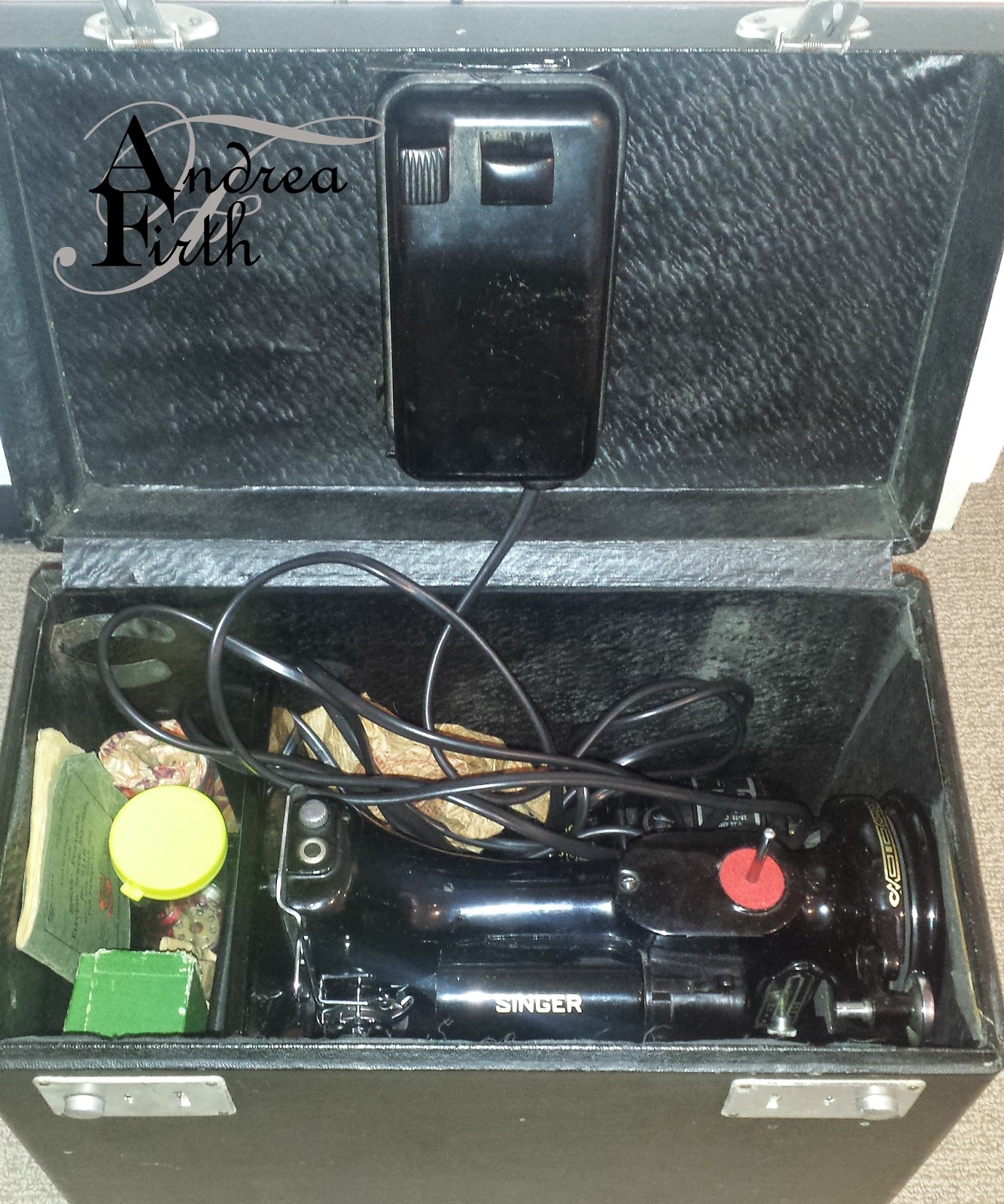After buying my 1945 Featherweight, I still had my eye out for a bargain featherweight in excellent (or at least usable) condition. I reasoned that I could probably buy another featherweight for less than it would take to restore the first one to a workable condition. And I was right.
I bought this machine from eBay in April this year. Not only does it have all accessories, but came in it's original black carry case.
This is another machine from Great Britain. It was a batch of 10,000 allocated on 4 March, 1953.
This beautiful featherweight came with the original box (see how the foot fits nicely in the lid?), a full set of accessories in their original cardboard box, bobbin case and four bobbins.
Work Done on This Machine
As soon as it arrived, I pulled this machine out of it's packaging, plugged it in and turned it on. It purrs like a kitten! When I got the time to actually thread it up and try it out properly, it only needed some minor adjustments to the tension. I was in the middle of trying out some feet when I realised that I should have given it an oil and clean first though. I got my thread stuck in the bobbin housing, and had to pull a lot of bits apart to get the tangled thread free (which turned out to be about 10cm long!)
 |
| "Striated" faceplate |
 |
| Celtic Chain design on decals |
Before I go though, I did want to tell you a bit about the ruffler attachment that came with this machine. I had previously tried out the ruffler that came with my 201K, with very disheartening results. I just couldn't get it to work. Before I packed this machine away, I thought I would give the new ruffler foot a go. Here's what happened when I used two scraps, first go, without even trying.
Perfect ruffles! I wasn't sure what I was doing differently, (if anything), so tried the other ruffler on some more scraps. Same setting.
Hmmm. Not quite so good! So I compared the two feet, and realised that it wasn't user error after all, nor was the foot bent out of shape or need an oil. Take a look at the two feet side by side.
The one on the left is the one I got first, and the one on the right came with this Featherweight. Now look closely at the darker metal prongs at the back right hand side. The one on the left is broken! The "teeth" at the end of the prongs have broken off! No wonder it won't work! At least I got to the bottom of the problem.
Keep an eye out for a detailed look at my other Singer machines:
Overview of my Singer sewing machines
1900 Model 27 Treadle
1950 Model 99K Electric
1937 Model 66K Treadle
1953 Model 201K Treadle
1943 Model 221K Featherweight
Singer Model 20 Child's Sewing Machine
Do you have a Singer featherweight? I'd love to see more! Feel free to leave the link to your related blog post in the comments below.









No comments:
Post a Comment